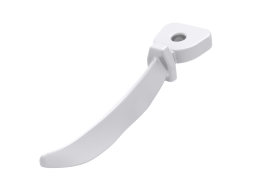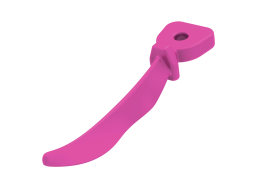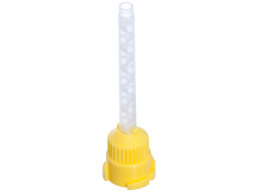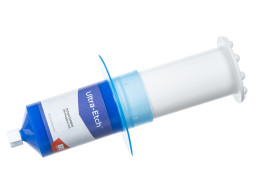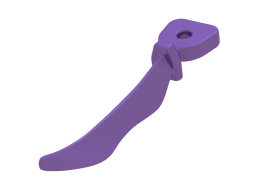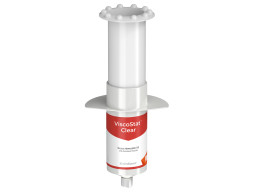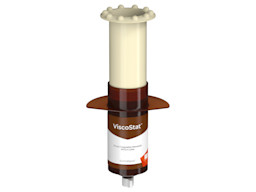Free Standard Shipping on All Orders $285+
Instructions for Use (IFU)
Safety Data Sheets (SDS)
Product Allergens
See any common allergens this product may contain >>Price breaks are offered on most items...
This amount is an estimate based on retail price. The actual amount due (shown at the final stages of your order) may be different from what is displayed here.
Return Policy
Items returned within 30 days of purchase with a return authorization number on the outside and inside of the return box will be credited 100%. Product returned between 31 and 60 days from purchase date is subject to a 20% restocking fee. Ultradent will not accept returns after 60 days. Errors in shipment must be reported within 14 days of invoice date. All return authorization numbers become invalid 90 days after date of issue. A return authorization number must accompany all returns to receive proper credit. Please contact Customer Service at 800.552.5512 for assistance.
Limited Warranty
Endodontic
Consepsis antibacterial solution is recommended for procedural endodontic disinfection, as a final endodontic rinse prior to canal obturation,1,2 and prior to pulp capping. Consepsis solution should be used after smear layer removal for canal disinfection. Sodium hypochlorite and EDTA solutions should be rinsed and removed prior to using Consepsis solution.
Note: DO NOT mix Consepsis solution (or any chlorhexidine solution) and ChlorCid™ solution (sodium hypochlorite) in the canal as a harmful brown precipitate will form.
Bonding
Consepsis solution is a 2.0% chlorhexidine gluconate solution free of emollients that interfere with bond strength.
Minimize post-op sensitivity by thoroughly cleaning and disinfecting the preparation prior to restoring. Use prior to cementation, luting (provisional and/or permanent), and direct restorative placement, as well as procedural endodontic disinfection. Disinfect with near-neutral Consepsis solution prior to pulp capping.
- No bond strength compromise
- Syringe delivery makes placement easy
- Reduces potential for postoperative sensitivity
- Use with Blue Mini Dento Infusor tips and Black Mini Brush tips
- Certified gluten free
Only ground shipping is available for 480 ml bottles.















Clinicals
Disinfect Preparations
Disinfect preparations by applying Consepsis antibacterial solution with the Blue Mini™ Dento-Infusor™ tip or Black Mini™ Brush tip.

Disinfect Canals
Use Consepsis antibacterial solution to disinfect canals during endodontic procedures, or as an interappointment intraoral medication.

Research & Studies
In vivo antimicrobial activity of 2% chlorhexidine used as a root canal irrigating solution
Leonardo MR, Filho MT, Silva LAB, Filho PN, Bonifácio KC, Ito IY. In vivo antimicrobial activity of 2% chlorhexidine used as a root canal irrigating solution. J Endod. 1999;25(3):167-71.
http://www.ncbi.nlm.nih.gov/pubmed/10321180 – Leonardo MR, Filho MT, Silva LAB, Filho PN, Bonifácio KC, Ito IY.Antimicrobial substantivity of root canal irrigants and medicaments: a review.
Mohammadi Z, Abbott PV. Antimicrobial substantivity of root canal irrigants and medicaments: a review. Aust Endod J. 2009;35(3):131-9.
http://www.ncbi.nlm.nih.gov/pubmed/19961451 – Mohammadi Z, Abbott PVIn vivo preservation of the hybrid layer by chlorhexidine.
Carrilho MRO, Geraldeli S, Tay F, et al. In vivo preservation of the hybrid layer by chlorhexidine. J Dent Res. 2007;86(6):529–533.
http://www.ncbi.nlm.nih.gov/pubmed/17525352 – Carrilho MRO, Geraldeli S, Tay F, et al.Customers Also Bought
- Leonardo MR, Filho MT, Silva LAB, Filho PN, Bonifácio KC, Ito IY. In vivo antimicrobial activity of 2% chlorhexidine used as a root canal irrigating solution. J Endod. 1999;25(3):167-71.
- Mohammadi Z, Abbott PV. Antimicrobial substantivity of root canal irrigants and medicaments: a review. Aust Endod J. 2009;35(3):131-9.



